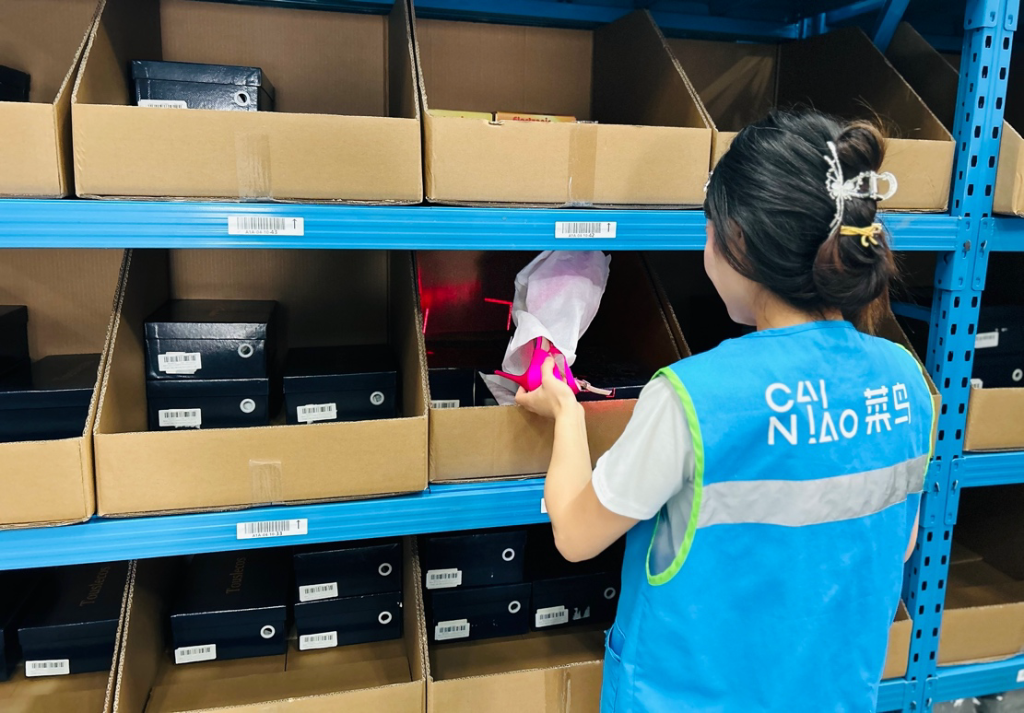Cainiao’s first cross-border e-commerce warehouse in Southwest China put into use
2024-04-18 11:30:53

CHONGQING (CQNEWS) -- On April 16, the global e-commerce logistics company Cainiao and the cross-border platform AliExpress announced that the Chengdu Industrial Belt Warehouse, a cross-border e-commerce warehouse located in Shuangliu District, Chengdu City, Sichuan Province, has been officially put into use. The first shipment, vegetable and fruit slicers have been shipped from this warehouse to Brazil.
At present, there are hundreds of distinctive industrial belts distributed throughout the country. In recent years, more and more industrial belt enterprises have achieved breakthroughs on AliExpress by leveraging the advantages of traditional manufacturing and seizing opportunities to go global through cross-border e-commerce. Public data shows that in March alone, 20,000 semi-managed merchants on AliExpress saw an increase in orders by over 100%.
Chengdu Industrial Belt Warehouse is the first industrial belt warehouse for cross-border trade that was introduced to the southwest China by Cainiao and AliExpress after Shenzhen Digital 3C, Foshan Home Decoration, Xuchang Wig and other industrial belt warehouses. It radiates to characteristic industrial belts such as women's shoes, automotive and motorcycle parts, beauty and health in Sichuan and Chongqing, meaning that cross-border e-commerce merchants have a warehouse at their doorstep. Relying on the rich supply from industrial belt warehouses, this warehouse makes flexible stocking and replenishment possible for merchants.
At the opening ceremony held on the same day, the reporter learned that the warehouse is operated in a "semi-managed" mode, leaving the cargo ownership, pricing right, and operation right to merchants, and logistics performance services to the platforms. Previously, the warehouses of AliExpress and Cainiao were mainly in the South and Central China regions, so merchants far away from the warehouses needed to ship goods to Dongguan or Hangzhou themselves at a higher logistics costs if they wanted to adopt the managed mode, and they had no advantages in terms of stocking cycle and delivery time.
"Merchants entrust the inventory management, allocation, shipment, and performance of goods to AliExpress and Cainiao. The goods will be shipped out within 24 hours after consumers place orders, and logistics cover multiple countries such as the Netherlands, the United Kingdom, and Brazil, connecting with the logistics service ‘arrival within 5 days globally’”. According to the person in charge of Cainiao, as the Chengdu Industrial Belts Warehouse was put into use, it means that cross-border merchants in Southwest China also have a “stocking warehouse at their doorstep".
Mr. Yu, a merchant selling women's shoe in Chengdu, told the reporter that he has been watching the semi-managed mode for a long time. However, this new mode has high requirements for stocking and delivery time, and there is a certain threshold for inland merchants. "Now that we have our own warehouse at our doorstep, we will follow the platforms’ policies and compete for the attention with Choice."
"As the industrial warehouse is adjacent to the industrial belt factory, semi-managed merchants can stock goods in small quantities and multiple batches flexibly, rather than in large quantities and at high costs, which will greatly reduce financial pressure and inventory management risks. Consumers can buy some light and small items with low unit price together. When they buy multiple items, the platform’s semi-managed logistics service will be upgraded uniformly, which can reduce shipping costs through combining orders, allowing consumers to enjoy faster logistics services at lower prices, and improve conversion and repurchase rates," said the person in charge of Cainiao. (Translated by Hu Chuanmin, Fathom Language Limited)
Editor:江夷玮

 手机阅读分享话题
手机阅读分享话题